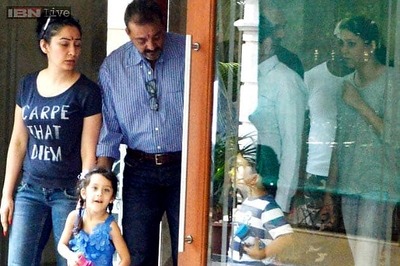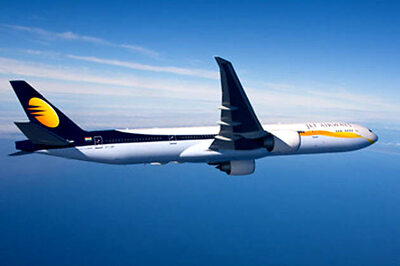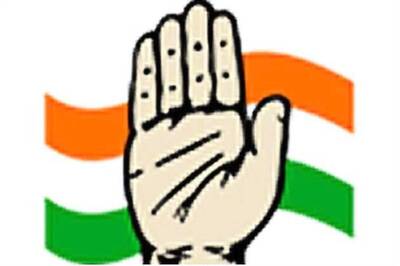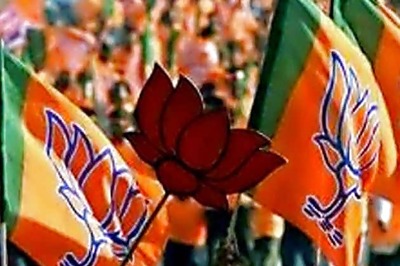
views
Minutes after I got on the phone with Sarika Saxena (works at Dasna) on Thursday, November 9, it was ‘clarified’ to me that I had been actually put in the ‘not interested’ category by the previous lady who had called and taken my details!!!!
Yeah right! I thought.
She asked me when it would be convenient for me to visit their plant in Dasna, Ghaziabad. And as part of the company protocol, a cab would pick me up from my office or home (Do they do it for everyone I wondered, chuckle). I was categorically told that they do not allow any camera inside the plant premises as part of the company protocol. She hung up and mailed me an official invitation asking me to confirm her the date and time for the visit.
I promptly replied expressing my eagerness to visit the plant on Tuesday, November 14, 2006. And requested her to arrange for a cab for me underlining the fact that I was slightly fuzzy about the location. (I had earlier thought to drive down but when I saw the directions to the place attached in the mail…It was like getting to moon!)
TUESDAY: I had almost reached office, when the receptionist informed me that a woman named Madhavi was waiting for me at the reception. Met Madhavi who told me that she called me on Monday but could not get through.
Ten minutes later, we were in the cab on our way to Dasna.
Madhavi, I learn in the course of our conversation, is an Associate Image Manager with Perfect Relations and takes care of the Coca-cola account. (I wonder if they send their PR hotshots on other plant visits as well!) Well, I was politely told that she too had wanted to visit the plant for long which she had not been able to do. So she decided to tag along.
She was good natured and amiable and it didn’t take us much time to get talking and when asked she said, ‘Coke positions itself as a fun-drink and not a beverage and we have never said that coke has zero pesticide residues levels. We say that the amount of pesticide residues found in coke is much below the international permissible limit. So there!’ She made no bones about the fact that she doesn't drink coke, not because it's unsafe but because of the high sugar level in it.
At the plant
Hindustan Coca-Cola Beverage Private Limited - the large board was staring me in the face. I was asked by one of the guards if I was carrying any camera or laptop. I replied in the negative. I met Sarika and Maneesh Bhatnagar (Associate Manager, Quality Assurance) at the office entrance.
We were ushered in a conference room. Towards my right were small transparent freezers stocked with all Coca-Cola products. We were given our black coca-cola caps to wear and we began our plant tour…
The Tour
The four of us first went to the Quality control unit, a rather large lab with equipments where – I was told by Maneesh- every half an hour a final bottle is tested as a representative sample. It is tested on various parameters: sugar content, fizz, colour etc.
The maze: I was then shown the huge storeroom where the formulae for each drink was kept in large containers as dry powder. Afterwards, I was shown the part where water was cleaned. They use ground water which passes thorough a number of tests and cleaned of all pesticides and impurities. This section was huge with all the big tanks and pipes crossing each other. It looked like one big maze.
Then I saw the sugar dissolving plant. Sugar is cleaned, dissolved here. And the tanks are cleaned after every single round. Also saw the cleaning area where the returnable glass bottles are cleaned (the ones that remain dirty are manually taken out by the workers). From there they are sent to the unit where they are electronically cleaned. In the other huge section, the drink is filled, the bottles are capped and the manufacturing date is put on it. The entire process is automated. The half filled bottles are rejected. It is actually quite fascinating to watch all that. Voila! You have your cola. Ready to drink.
I was also shown the PD section where small plastic cylinders are turned into bottled before being filled and capped etc. I looked at their water treatment plant. God! The stench was mind-numbing. But I wanted to go all the way up and see it. 30-40% of the treated water is used for developing the green belt. The rest is thrown and goes out through a pipe provided by the UP Government. I was informed there were regular quality checks in-house, as well as third-party monitoring and checks by govt. officials.
What I learnt
Dasna is the largest plant in South Asia with three RGB (Returnable Glass Bottles – the bottles available at local vendors) units and two PD (Pet bottles) units.
Each RGB unit produces 600 bottles at one go!
They produce all Coca-cola products (Sprite, Coke, Fanta…et al barring Maaza).
The plant mainly supplies to Noida, Central and East Delhi and parts of South Delhi, Amritsar and Ludhiana.
There are about 160 permanent employees. The plant employs about 200-300 casual workers during the peak season (from about April to September).
All the equipments have been imported and installed.
Sarika claimed that about 700 people have come so far on the factory visit after the SMS campaign. (I had mailed Sarika to give me the number of a few so that I could talk to them. A week later, am still waiting for her response).
About the pesticide residues found in the drinks, Maneesh gave me the same answer (vague to me, clear to them) that ‘it depends on what scale are you measuring. Internationally they talk about pesticides in parts per trillion or billion. We meet the internationally prescribed limits. In fact the pesticide content is much lower than that.’
It was also pointed out to me that 'why is it that they only look for pesticides in Colas when there are pesticides in fruits and vegetables... almost everything! (Now that kind of logic beats me completely. Two wrongs don't make a right! Its like stating, 'There are 100 murders in Delhi. Oh! Don't worry. It's nothing. There are a 1000 killings in so-and-so state!')
The other side
To know both sides of the story I decided to satisfy myself by talking to Centre for Science and Environment (CSE). I spoke with Khushal Pal Singh Yadav, who works with the Pesticides & Food Safety Unit of CSE. And this is what he had to say:
What standards are they talking about? The permissible standards world over are not well defined.
If they have production units in India, why can’t they go ahead and follow the standards set by us?
Earlier India did not have any standards, but now Bureau of India Standards (BIS) has finalised that there should not be more than point 5 parts per billion for all pesticides in each bottle. But BIS has not been able to notify them only because of the pressure exerted by these companies on the Government. They should follow the norms and meet the standards of the country they are operational in.
Then there is another problem. These companies refuse to categorise their drink in the beverage category. Instead they say that they are a ‘fun drink’ as Colas are not a substitute for water, milk or juices. Now that phrase is extremely misleading because at the end of the day people go ahead and drink colas as any other beverage.
In their PR exercises and campaigns, they claim to be socially responsible and make a song and dance about Corporate Social Responsibility. In their Ad-campaigns they say they are completely safe but at other forums they admit (like they told you) that they do have pesticide residues in their drinks but it is far lower than the permissible limit and they follow international standards… these are nothing but double standards.
The Cola companies are also fighting the Rajasthan High Court ruling of October 2004, which has asked them to disclose their ingredients. They have applied against it in the Supreme Court as well.
If they are so sure that they are safe please ask them to go ahead and put it on their drinks that ‘consuming this product is completely safe and that it contains no pesticide residues’. Will they do that?
Well, I have been told by many that this issue is dead. In fact I even told Madhavi that I had actually messaged like any other conscious citizen and not because I belong to the press and wanted to rake up an issue. It was something I wanted to know for myself but because I am as concerned about my health and my family’s just like anyone else.
Anyway, while this may be the end of the tale; the story continues. Claims and counter-claims are flying high. Companies may or may not care about public health in spite of making tall claims about social responsibility; the truth is in your hands.
I am not too sure if the colas will put any disclaimer as suggested by CSE on their products. Until then, the invisible disclaimer reads something like this:
Drink if you must but at your own risk. Consumer discretion advised! About the AuthorGarima Dutt Garima Dutt is the Web Producer and Web Anchor for IBNLive.com and produces/anchors broadband shows on entertainment etc. She also writes for Ibnlive....Read Morefirst published:November 23, 2006, 16:38 ISTlast updated:November 23, 2006, 16:38 IST
window._taboola = window._taboola || [];_taboola.push({mode: 'thumbnails-mid-article',container: 'taboola-mid-article-thumbnails',placement: 'Mid Article Thumbnails',target_type: 'mix'});
let eventFire = false;
window.addEventListener('scroll', () => {
if (window.taboolaInt && !eventFire) {
setTimeout(() => {
ga('send', 'event', 'Mid Article Thumbnails', 'PV');
ga('set', 'dimension22', "Taboola Yes");
}, 4000);
eventFire = true;
}
});
window._taboola = window._taboola || [];_taboola.push({mode: 'thumbnails-a', container: 'taboola-below-article-thumbnails', placement: 'Below Article Thumbnails', target_type: 'mix' });Latest News
Finally as we all had predicted… the Coke guys called. (For the uninitiated, I had messaged on the number advertised as part of the coke’s image-salvage campaign post the CSE report. And just written a blog - What Aamir promised & what I got! - on how I never got the final call after a lady had called and taken my personal and professional details!)
Minutes after I got on the phone with Sarika Saxena (works at Dasna) on Thursday, November 9, it was ‘clarified’ to me that I had been actually put in the ‘not interested’ category by the previous lady who had called and taken my details!!!!
Yeah right! I thought.
She asked me when it would be convenient for me to visit their plant in Dasna, Ghaziabad. And as part of the company protocol, a cab would pick me up from my office or home (Do they do it for everyone I wondered, chuckle). I was categorically told that they do not allow any camera inside the plant premises as part of the company protocol. She hung up and mailed me an official invitation asking me to confirm her the date and time for the visit.
I promptly replied expressing my eagerness to visit the plant on Tuesday, November 14, 2006. And requested her to arrange for a cab for me underlining the fact that I was slightly fuzzy about the location. (I had earlier thought to drive down but when I saw the directions to the place attached in the mail…It was like getting to moon!)
TUESDAY: I had almost reached office, when the receptionist informed me that a woman named Madhavi was waiting for me at the reception. Met Madhavi who told me that she called me on Monday but could not get through.
Ten minutes later, we were in the cab on our way to Dasna.
Madhavi, I learn in the course of our conversation, is an Associate Image Manager with Perfect Relations and takes care of the Coca-cola account. (I wonder if they send their PR hotshots on other plant visits as well!) Well, I was politely told that she too had wanted to visit the plant for long which she had not been able to do. So she decided to tag along.
She was good natured and amiable and it didn’t take us much time to get talking and when asked she said, ‘Coke positions itself as a fun-drink and not a beverage and we have never said that coke has zero pesticide residues levels. We say that the amount of pesticide residues found in coke is much below the international permissible limit. So there!’ She made no bones about the fact that she doesn't drink coke, not because it's unsafe but because of the high sugar level in it.
At the plant
Hindustan Coca-Cola Beverage Private Limited - the large board was staring me in the face. I was asked by one of the guards if I was carrying any camera or laptop. I replied in the negative. I met Sarika and Maneesh Bhatnagar (Associate Manager, Quality Assurance) at the office entrance.
We were ushered in a conference room. Towards my right were small transparent freezers stocked with all Coca-Cola products. We were given our black coca-cola caps to wear and we began our plant tour…
The Tour
The four of us first went to the Quality control unit, a rather large lab with equipments where – I was told by Maneesh- every half an hour a final bottle is tested as a representative sample. It is tested on various parameters: sugar content, fizz, colour etc.
The maze: I was then shown the huge storeroom where the formulae for each drink was kept in large containers as dry powder. Afterwards, I was shown the part where water was cleaned. They use ground water which passes thorough a number of tests and cleaned of all pesticides and impurities. This section was huge with all the big tanks and pipes crossing each other. It looked like one big maze.
Then I saw the sugar dissolving plant. Sugar is cleaned, dissolved here. And the tanks are cleaned after every single round. Also saw the cleaning area where the returnable glass bottles are cleaned (the ones that remain dirty are manually taken out by the workers). From there they are sent to the unit where they are electronically cleaned. In the other huge section, the drink is filled, the bottles are capped and the manufacturing date is put on it. The entire process is automated. The half filled bottles are rejected. It is actually quite fascinating to watch all that. Voila! You have your cola. Ready to drink.
I was also shown the PD section where small plastic cylinders are turned into bottled before being filled and capped etc. I looked at their water treatment plant. God! The stench was mind-numbing. But I wanted to go all the way up and see it. 30-40% of the treated water is used for developing the green belt. The rest is thrown and goes out through a pipe provided by the UP Government. I was informed there were regular quality checks in-house, as well as third-party monitoring and checks by govt. officials.
What I learnt
- Dasna is the largest plant in South Asia with three RGB (Returnable Glass Bottles – the bottles available at local vendors) units and two PD (Pet bottles) units.
- Each RGB unit produces 600 bottles at one go!
- They produce all Coca-cola products (Sprite, Coke, Fanta…et al barring Maaza).
- The plant mainly supplies to Noida, Central and East Delhi and parts of South Delhi, Amritsar and Ludhiana.
- There are about 160 permanent employees. The plant employs about 200-300 casual workers during the peak season (from about April to September).
- All the equipments have been imported and installed.
- Sarika claimed that about 700 people have come so far on the factory visit after the SMS campaign. (I had mailed Sarika to give me the number of a few so that I could talk to them. A week later, am still waiting for her response).
- About the pesticide residues found in the drinks, Maneesh gave me the same answer (vague to me, clear to them) that ‘it depends on what scale are you measuring. Internationally they talk about pesticides in parts per trillion or billion. We meet the internationally prescribed limits. In fact the pesticide content is much lower than that.’
- It was also pointed out to me that 'why is it that they only look for pesticides in Colas when there are pesticides in fruits and vegetables... almost everything! (Now that kind of logic beats me completely. Two wrongs don't make a right! Its like stating, 'There are 100 murders in Delhi. Oh! Don't worry. It's nothing. There are a 1000 killings in so-and-so state!')
The other side
To know both sides of the story I decided to satisfy myself by talking to Centre for Science and Environment (CSE). I spoke with Khushal Pal Singh Yadav, who works with the Pesticides & Food Safety Unit of CSE. And this is what he had to say:
- What standards are they talking about? The permissible standards world over are not well defined.
- If they have production units in India, why can’t they go ahead and follow the standards set by us?
- Earlier India did not have any standards, but now Bureau of India Standards (BIS) has finalised that there should not be more than point 5 parts per billion for all pesticides in each bottle. But BIS has not been able to notify them only because of the pressure exerted by these companies on the Government. They should follow the norms and meet the standards of the country they are operational in.
- Then there is another problem. These companies refuse to categorise their drink in the beverage category. Instead they say that they are a ‘fun drink’ as Colas are not a substitute for water, milk or juices. Now that phrase is extremely misleading because at the end of the day people go ahead and drink colas as any other beverage.
- In their PR exercises and campaigns, they claim to be socially responsible and make a song and dance about Corporate Social Responsibility. In their Ad-campaigns they say they are completely safe but at other forums they admit (like they told you) that they do have pesticide residues in their drinks but it is far lower than the permissible limit and they follow international standards… these are nothing but double standards.
- The Cola companies are also fighting the Rajasthan High Court ruling of October 2004, which has asked them to disclose their ingredients. They have applied against it in the Supreme Court as well.
- If they are so sure that they are safe please ask them to go ahead and put it on their drinks that ‘consuming this product is completely safe and that it contains no pesticide residues’. Will they do that?
Well, I have been told by many that this issue is dead. In fact I even told Madhavi that I had actually messaged like any other conscious citizen and not because I belong to the press and wanted to rake up an issue. It was something I wanted to know for myself but because I am as concerned about my health and my family’s just like anyone else.
Anyway, while this may be the end of the tale; the story continues. Claims and counter-claims are flying high. Companies may or may not care about public health in spite of making tall claims about social responsibility; the truth is in your hands.
I am not too sure if the colas will put any disclaimer as suggested by CSE on their products. Until then, the invisible disclaimer reads something like this:
Drink if you must but at your own risk. Consumer discretion advised!




















Comments
0 comment